1.2 Merchant Center 帐号基础架构概览
简介和业务影响
第一步是构建基础架构,使商家能够创建新的 Merchant Center 帐号或关联现有的 Merchant Center。根据商家的选择,商家有不同的帐号设置步骤,供他们完成初始配置步骤。
用户体验指南
为用户提供创建新账号或关联现有账号的选项
系统会提示商家创建新的 Merchant Center 帐号或关联到现有帐号: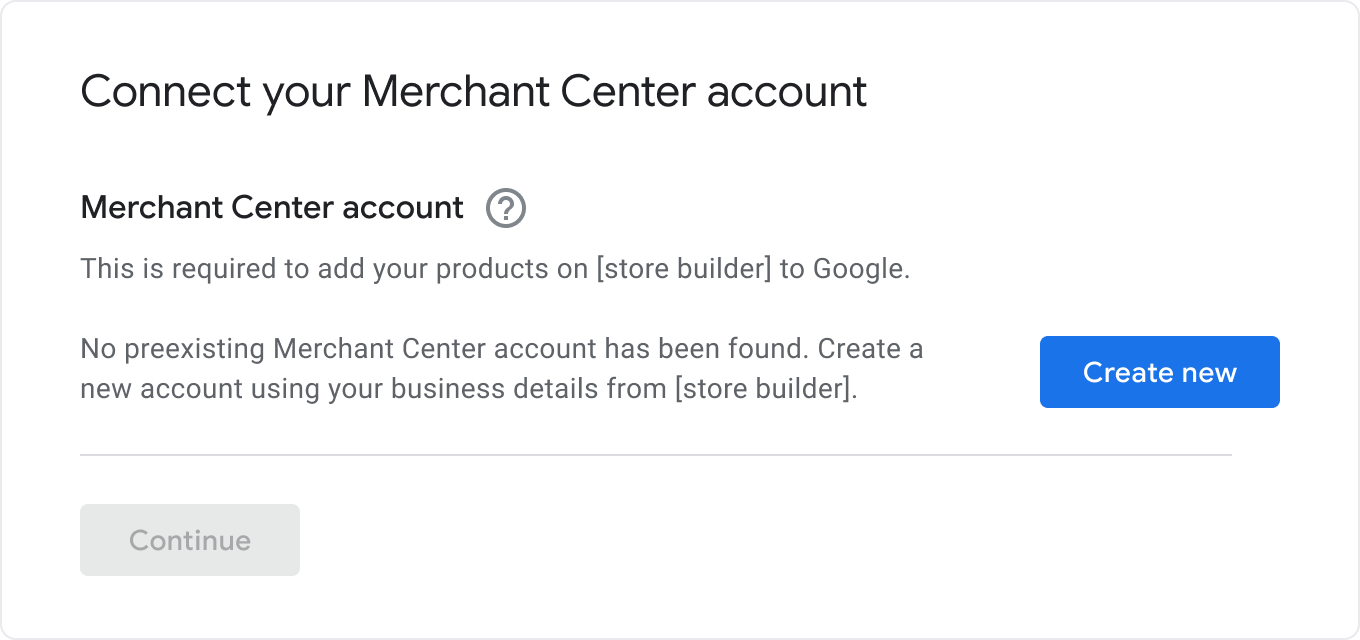
以下是单个现有 Merchant Center 账号的选项示例:
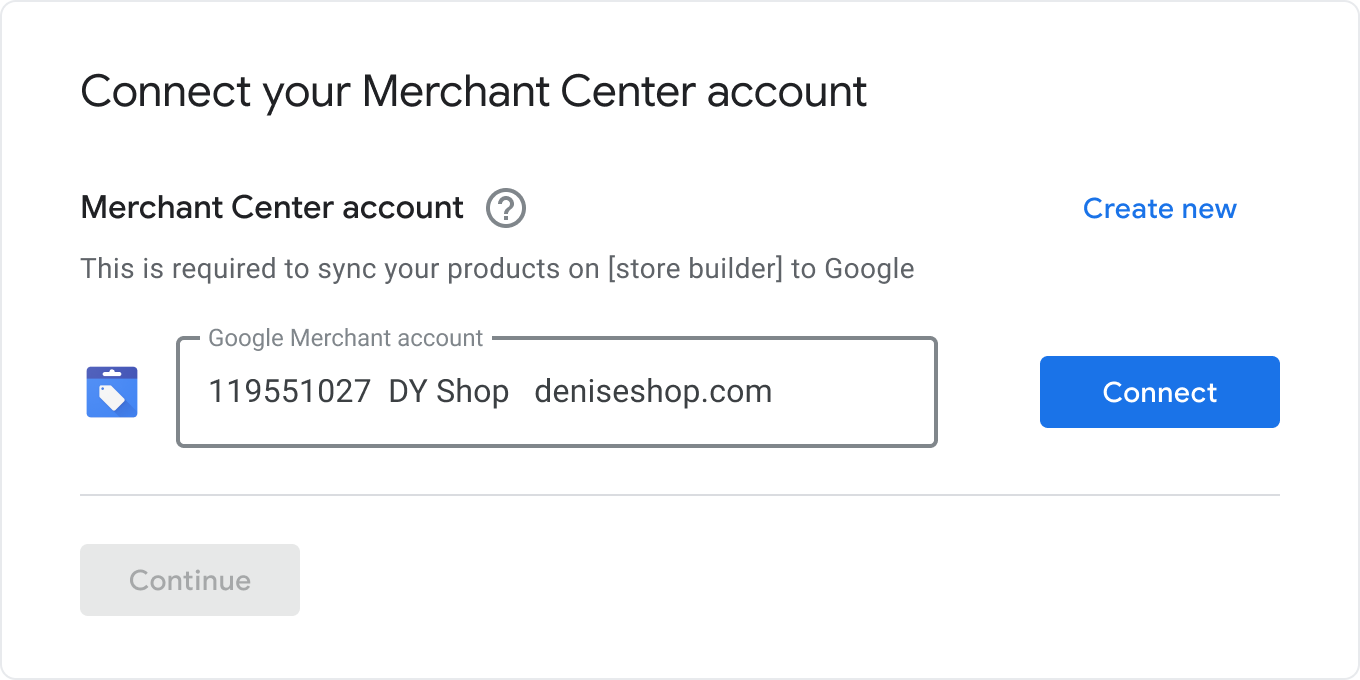
下面是一个适用于多个现有 Merchant Center 账号的选项示例:
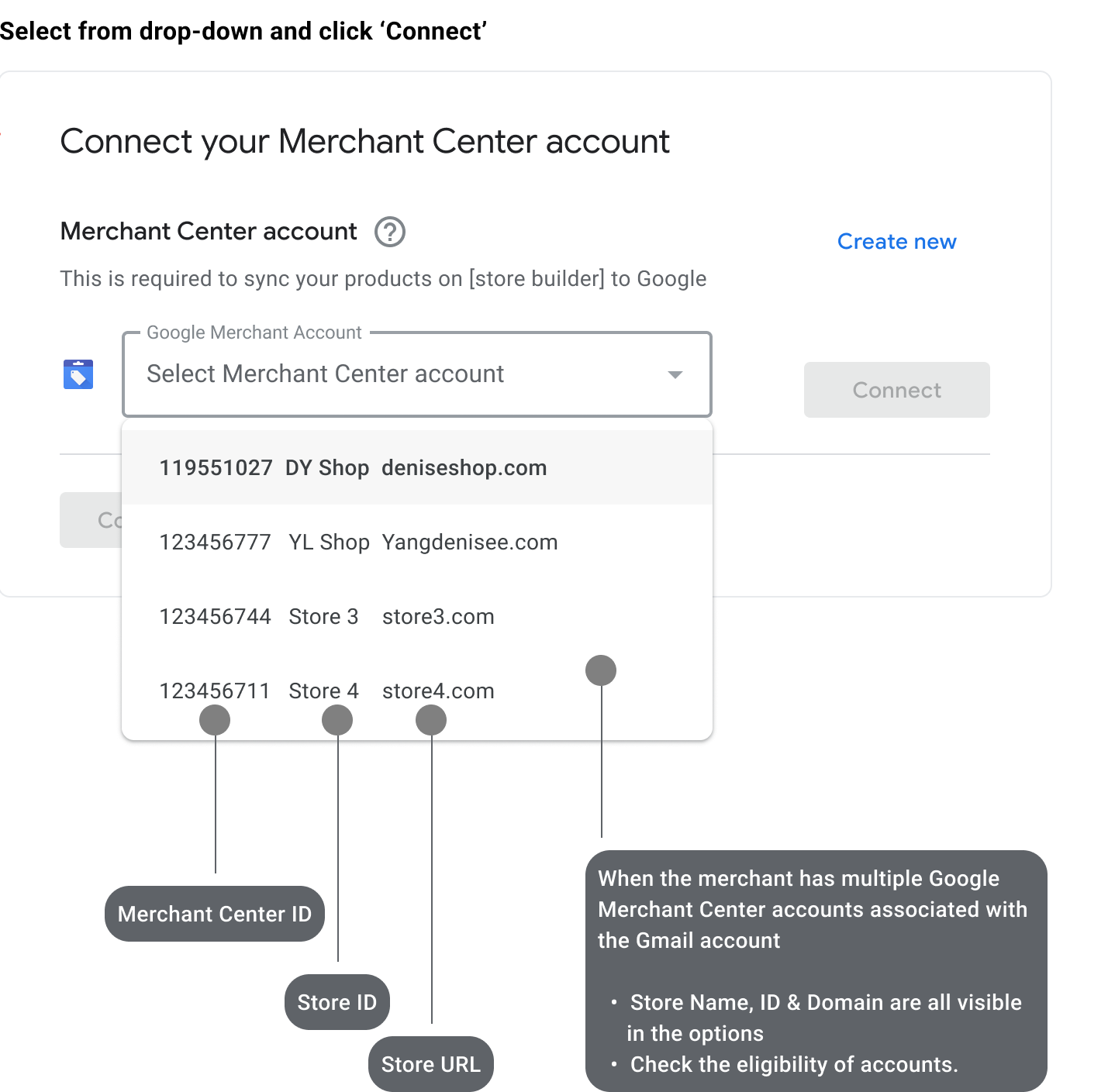
不妨详细了解现有 Merchant Center 账号所需执行的步骤。
技术指南
为了确保您的商家遵循最适合他们需求的最佳路径,在本部分中需要介绍多个步骤:
- 构建架构概览
- 创建并确认您是否拥有多客户帐号 (MCA)
- 为用户提供创建新帐号或关联现有帐号的选项
- 创建新的 Merchant Center 账号
- 现有 Merchant Center 连接
构建架构概览
合作伙伴利用 MCA 和 Content API for Shopping 将其商家无缝集成到 Merchant Center。
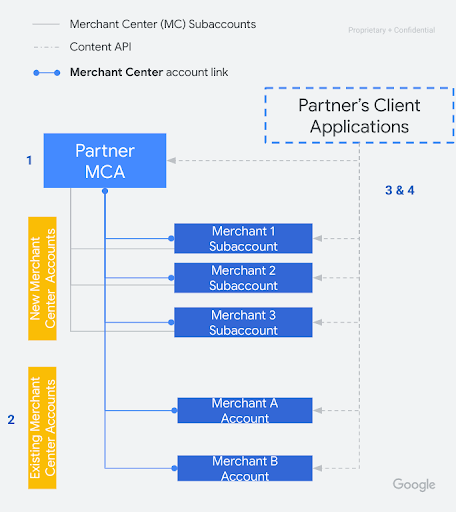
下面的数字与上图相对应:
多客户帐号 (MCA) 是一个用于整理商家的子帐号 (MC 帐号) 的“经理”帐号。MCA 是使用 Content API 创建新的子账号的唯一方式。
如果您的某个商家已有 MC 帐号,则可能需要使用现有的 MC 帐号*。无法使用 MCA 界面管理现有的 MC 帐号,因为它们无法移动到您的 MCA 下。因此,只能使用 Content API 来管理它们。
借助 Content API,您可以管理任何子帐号(MC 帐号),只要您获得了访问权限 (OAuth 2.0)。
所有商家 MC 帐号(包括子帐号)都必须使用
Accounts.linkAPI 方法与您的 MCA 相关联。(详细了解帐号关联的运作方式)
创建并确认您是否拥有多客户帐号 (MCA)
利用多客户帐号,您可以将各个商家帐号的数据作为子帐号 (MC 帐号) 进行管理。(详细了解多客户帐号 (MCA))
创建多客户帐号 (MCA) 的步骤
创建 Merchant Center 帐号。我们建议您创建一个新的 Google 帐号并使用该帐号来创建您的 MCA。这样可以确保不发生与帐号相关的帐号中止问题,以免导致转化延迟。
当您将这个 Merchant Center 账号用作 MCA 时,请勿为此 MC 验证网站或声明其所有权。
请求 Google 将您的 Merchant Center 账号转换为 MCA。
Google 会转换您的账号。
使用多客户帐号组织商家子帐号(MC 帐号)
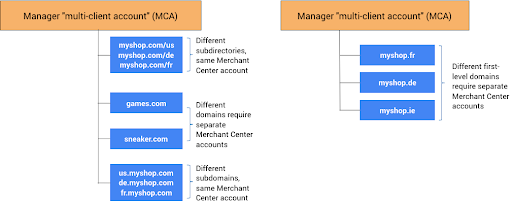
每个商家子帐号 (MC 帐号) 都可以拥有不同的商店名称和唯一的网站网址。下图展示了如何组织一个或多个 MCA:商家帐号、商家帐号、网店且位于多个国家/地区:
MCA 下的单个网域(例如 myshop.com)可以与单独的 Merchant Center 子帐号相关联。
该网域中的不同网域(例如 us.myshop.com)和子目录(例如 myshop.com/us)可以使用相同的 Merchant Center 帐号。
单独的网域(例如 games.com、sneaker.com、myshop.fr 和 myshop.de)需要为每个网域分别创建一个商家帐号。
避免发布多个包含类似内容的网站,否则可能会导致帐号遭拒。 (详细了解我们关于重复内容的政策。)
配额管理
对于在 MCA 下创建的 Merchant Center 子帐号,这些商家受 MCA 配额的限制。配额是指子帐号、优惠和 Feed 等配额。如需增加商品配额,请务必将 MCA 的商品拒批总百分比控制在 10-20% 的范围内,以免日后增加配额时出现任何问题。一旦 MCA 达到帐号配额上限,您将无法向帐号添加更多商品或子帐号。
如需申请增加配额,请与您的 Google 联系人联系,或在配额申请表中提交申请。我们建议您密切关注您的配额,因为这需要一些时间进行处理。
为用户提供创建新账号或关联现有账号的选项
商家需要决定是创建新的 Merchant Center 帐号,还是使用现有的 Merchant Center 帐号。
商家决定创建新账号:我们建议您通知商家,创建新账号时,可能会因为网站所有权声明而出现购物计划方面的问题。
每个商家至少需要一个 Merchant Center 帐号:如果商家已有帐号或 Gmail 帐号,请使用
accounts.authinfo查看该商家是否已有帐号。向用户显示选项:商家可以决定是使用现有帐号还是创建新帐号。如果他们使用现有帐号,我们建议您通知商家,这可能会重置现有设置(例如税费/运费)。
多个帐号的初始配置:您应允许用户在初始配置流程中通过多选或多个路径对多个帐号进行初始配置(当商家拥有多个网站时使用)
